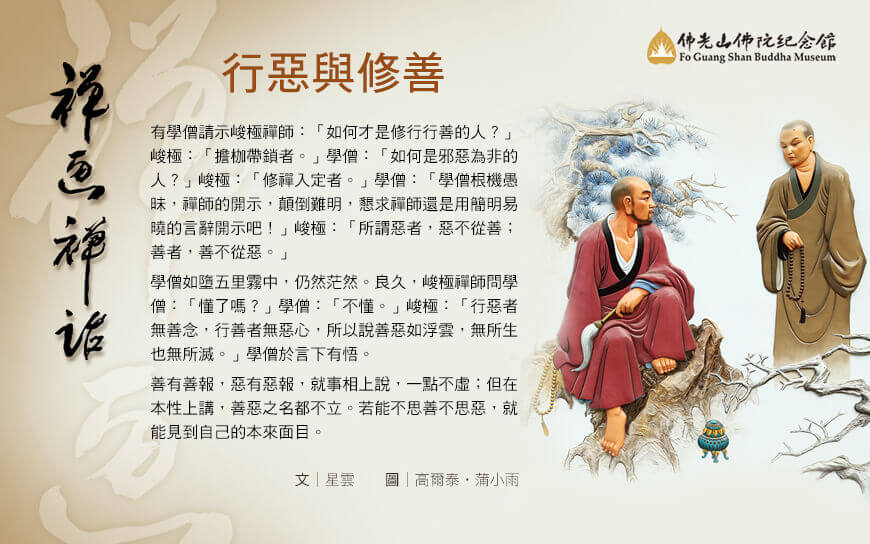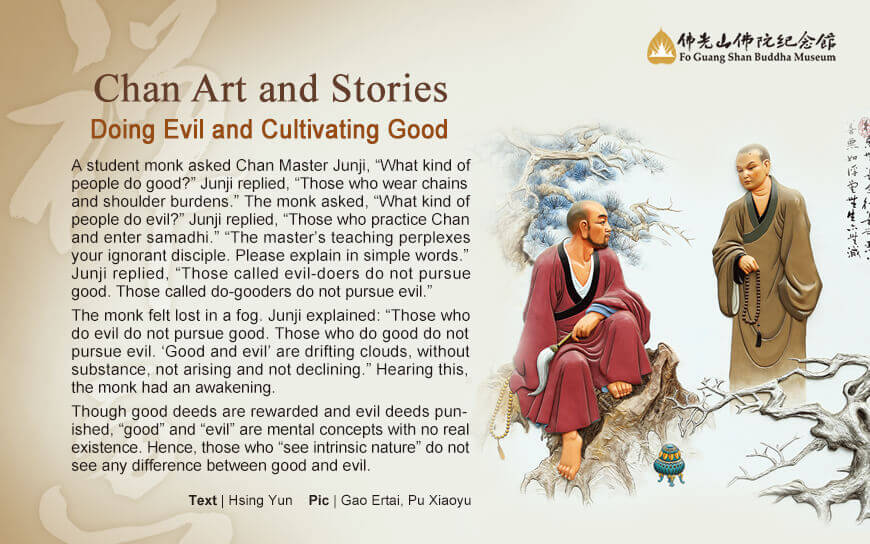語音導覽 - 禪畫禪話Audio Guide - Chan Art and Stories

有學僧請示峻極禪師:「如何才是修行行善的人?」
峻極:「擔枷帶鎖者。」學僧:「如何是邪惡為非的人?」峻極:「修禪入定者。」學僧:「學僧根機愚昧,禪師的開示,顛倒難明,懇求禪師還是用簡明易曉的言辭開示吧!」峻極:「所謂惡者,惡不從善;善者,善不從惡。」
學僧如墮五里霧中,仍然茫然。良久,峻極禪師問學僧:「懂了嗎?」學僧:「不懂。」峻極:「行惡者無善念,行善者無惡心,所以說善惡如浮雲,無所生也無所滅。」學僧於言下有悟。
善有善報,惡有惡報,就事相上說,一點不虛;但在本性上講,善惡之名都不立。若能不思善不思惡,就能見到自己的本來面目。

A student monk asked Chan Master Junji, “What kind of people do good?” Junji replied, “Those who wear chains and shoulder burdens.” The monk asked, “What kind of people do evil?” Junji replied, “Those who practice Chan and enter samadhi.” “The master’s teaching perplexes your ignorant disciple. Please explain in simple words.” Junji replied, “Those called evil-doers do not pursue good. Those called do-gooders do not pursue evil.”
The monk felt lost in a fog. Junji explained: “Those who do evil do not pursue good. Those who do good do not pursue evil. ‘Good and evil’ are drifting clouds, without substance, not arising and not declining.” Hearing this, the monk had an awakening.
Though good deeds are rewarded and evil deeds punished, “good” and “evil” are mental concepts with no real existence. Hence, those who “see intrinsic nature” do not see any difference between good and evil.
 上一則
上一則